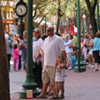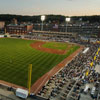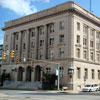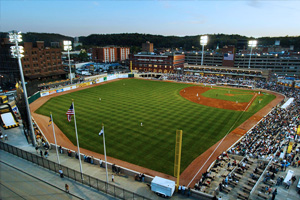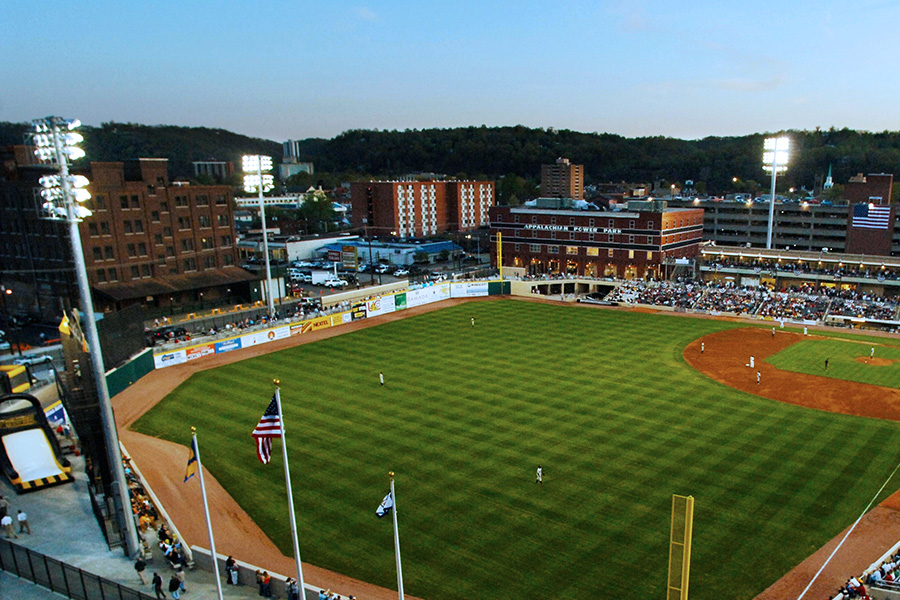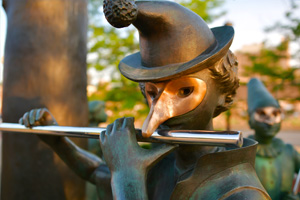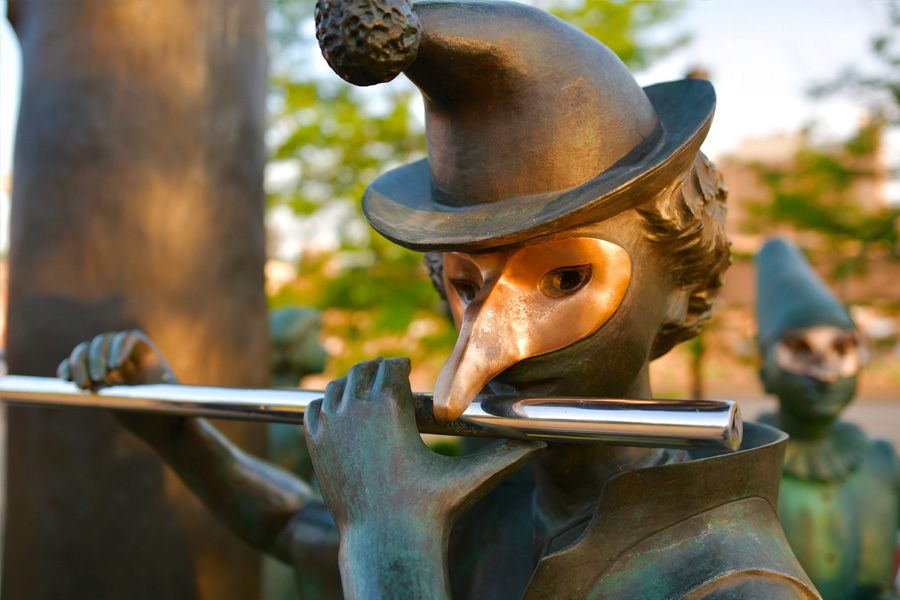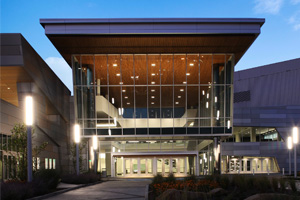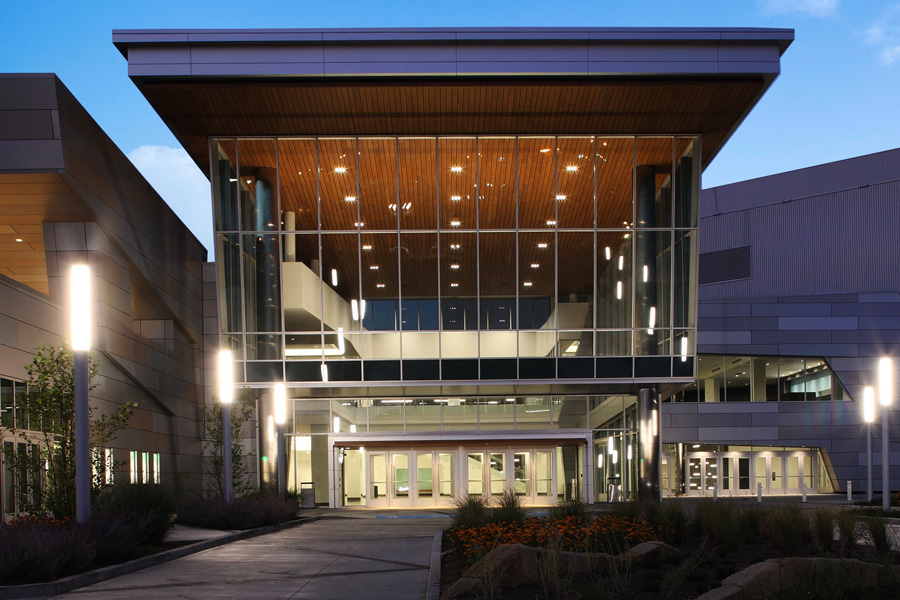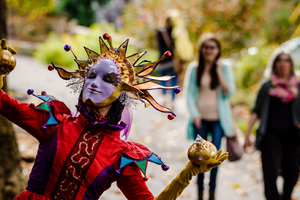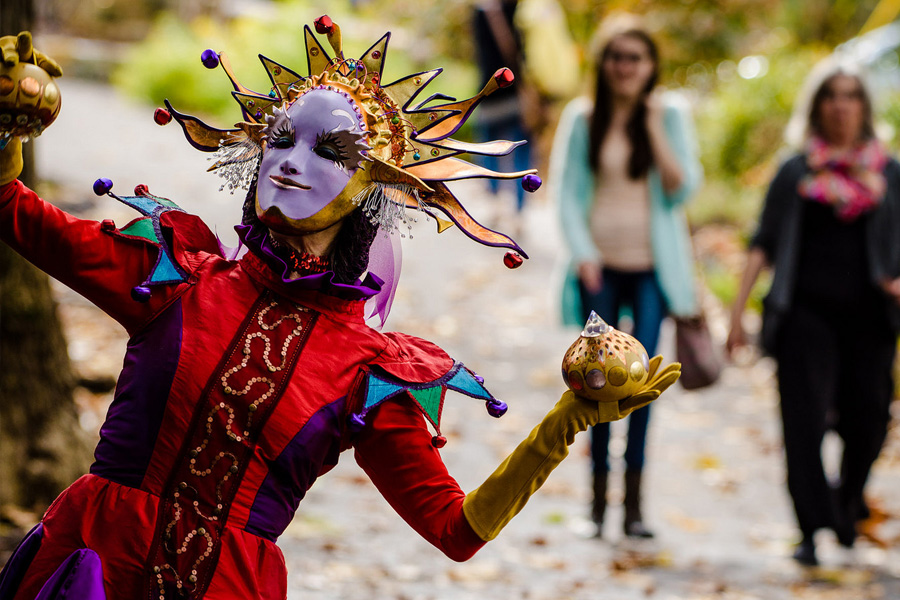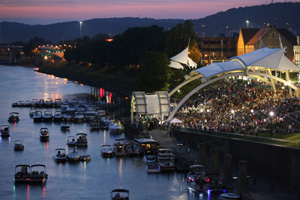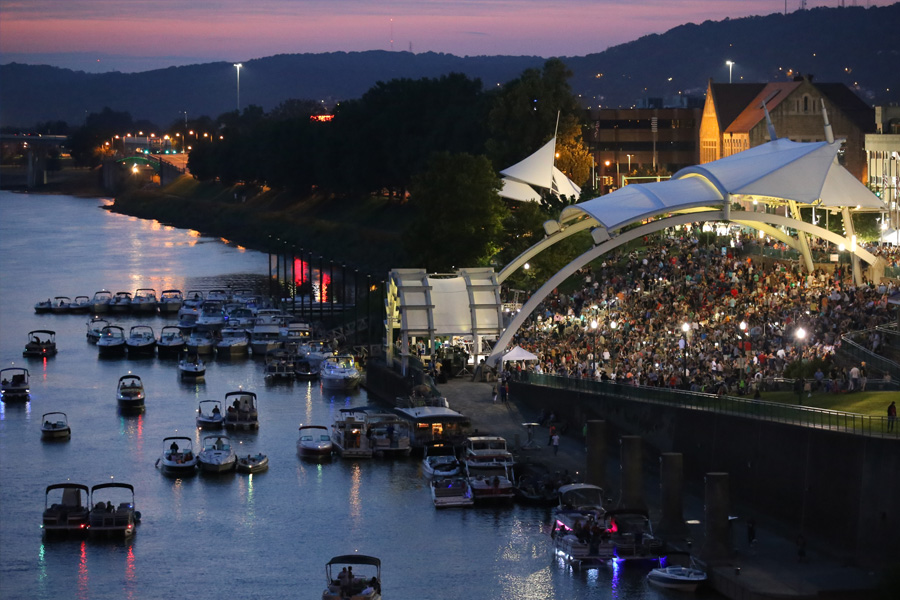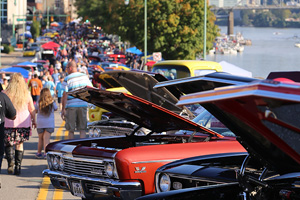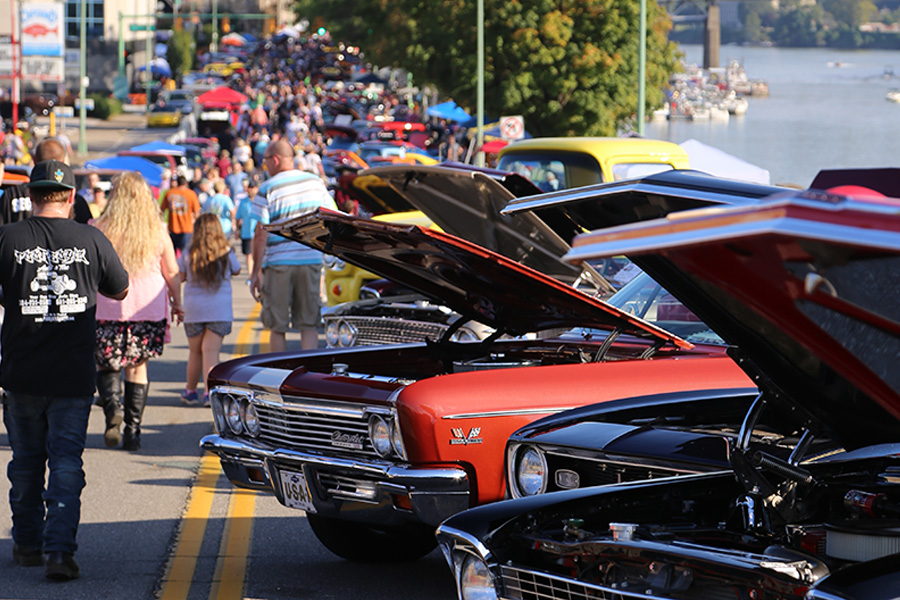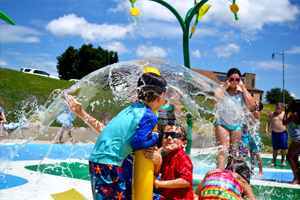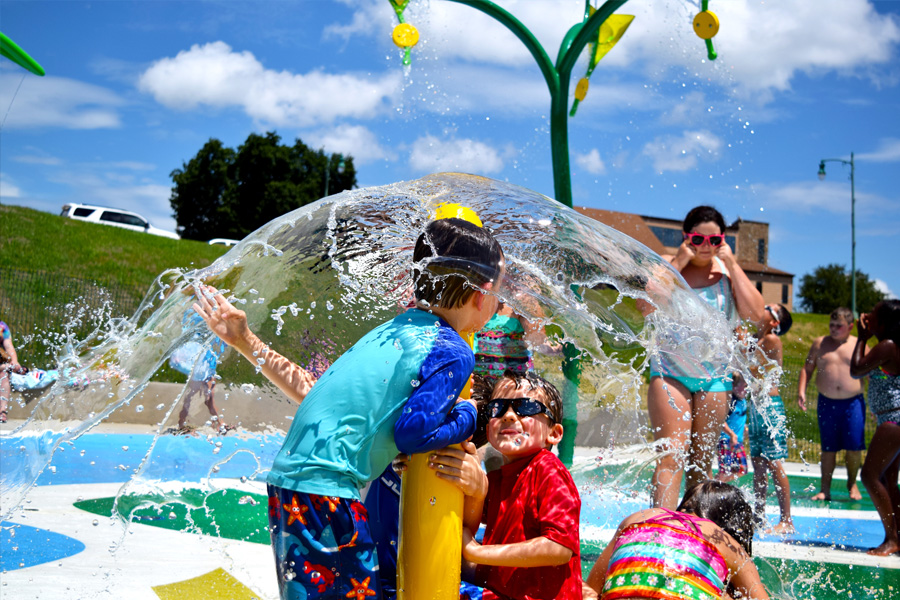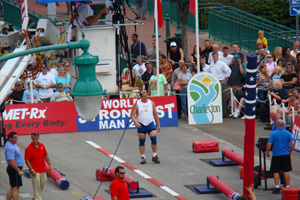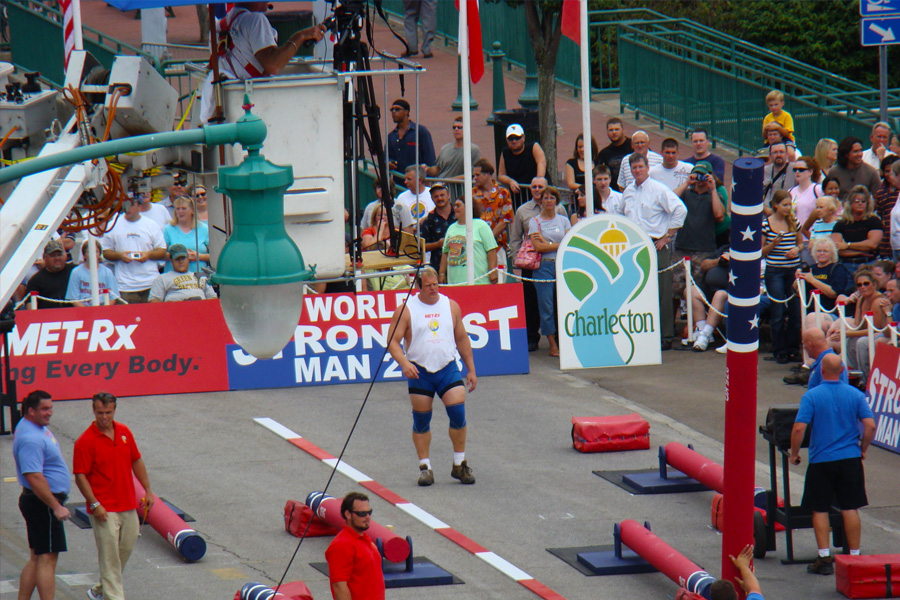Skip to main content
PROGRESS IN CHARLESTON, LED BY MAYOR DANNY JONES
- $100 million transformation project of the Charleston Coliseum and Convention Center, adding valuable convention space, a new riverfront park and two grand new entrances to the facility;
- More than $120 million more in private investment just since 2012, including hotels, restaurants, tourism infrastructure, mixed use buildings and other projects that make Charleston more attractive for people to live, visit, work, recreate, innovate and invest;
- Long term stabilization of the city’s historically underfunded pension systems for police and fire department retirees – which had been among the worst funded pension systems in the nation for cities this size – to fulfill our promise to those who have served as emergency responders;
- DHHR decertification and closure of a mismanaged needle distribution program, which had led to hundreds of thousands of needles that were not “exchanged” but discarded in various public places, a rise in crime and criminal vagrancy as people from outside the county came to our city to get needles, and an influx of drug dealers to prey on people suffering from addictions;
- Support for Health Rite WV’s harm reduction program that requires more interaction with medical professionals and conversations about treatment options for those exchanging needles;
- Introduction of a Quick Response Team of medical, social service and first responder professionals to try to follow up directly with addicts who have overdosed toward recovery and treatment;
- Expansion of the Charleston Police Department to a force of 173 and creation of hybrid patrols that expand police patrols in underserved areas with an emphasis on community connections;
- More than $100 million invested in private and public sector financing to improve and transform affordable and government-assisted housing – starting with the major renovation of Vista View and including the complete replacement of both Washington Manor and Littlepage Terrace;
- The new Project West Invest to encourage police officers and teachers to live in and strengthen their communities within West Side neighborhoods;
- Improvement of neighborhoods through balanced enforcement of building codes and demolition of 1,066 decaying homes and buildings – most of them on the West Side;
- Enactment of a new State law to streamline the legal process for demolition of abandoned homes in cities and a Home Rule ordinance to give more enforcement authority to building inspectors;
- The Family Reunification and Opportunity Enhancement Program that has provided free transportation to more than 200 homeless people stuck in Charleston so they could return to places where they have family support and better opportunities for assistance and/or jobs;
- Creation of FestivALL Charleston that has empowered Charleston’s arts community as never before and has expanded to produce and promote arts and culture in every season of the year;
- New special events that make Charleston more attractive and fun: Moses Auto Group Live on the Levee, Charleston Boulevard Rod Run & Doo Wop, Sports Fest with beach volleyball and jet skiing, and dozens of other events attracting people to neighborhoods throughout the city;
- An explosion of public art under I-64 and throughout neighborhoods and business districts with an emphasis on art and artisans, promoted by the city’s first ever Director of Public Art;
- The Schoenbaum Stage, new canopy and expanded boat docks at Haddad Riverfront Park – the first step of the riverfront development master plan – and Charleston’s “front porch” on the river;
- Construction of Appalachian Power Park, which kept professional baseball in Charleston;
- Restoration of the street paving program and $17.6 million invested in paving 165 miles of city streets;
- New bike lanes on Kanawha Boulevard, West, to promote safer bicycling and healthier living, in conjunction with a comprehensive study of opportunities for and benefits from new biking trails;
- The public / private partnership that is establishing a new 1 Gig data fiber ring to serve the downtown area (including the city’s IT infrastructure) and provide for free Wi-Fi at key locations;
- Vocal, strategic and ultimately successful opposition to the Legislature’s consideration of RFRA, a proposal that would have led to discrimination against LGBTQ citizens and damaged Charleston’s ability to attract visitors and special events;
- Expansion of local anti-discrimination protections to include LGBTQ citizens, making Charleston the first city in West Virginia to enact that as local law with complaints investigated by its Human Right Commission;
- Creation of the RESET leadership team that has improved communication and built relationships among police officers and community organizations with a new communications protocol for emergency situations, community events to build positive relationships within the city, and strategies to recruit more minorities to the CPD;
- De-escalation and racial sensitivity training of police officers toward prevention of the kind of tragedies and related civil unrest that have erupted in many other communities;
- Introduction of outdoor dining for downtown restaurants in compliance with state ABC rules;
- Reformation of the Charleston Convention and Visitors Bureau into the largest marketing force for conventions, conference, meetings and special events in West Virginia’s capital city, leading to 170,000 room nights booked and an economic impact of $100 million in just the last six years;
- Brand development for Charleston as “Hip, Historic, Almost Heaven,” with an emphasis on food, arts, recreation and music to attract visitors and special events – and recognition by the Southeast Tourism Society of the Mayor as the leading tourism advocate among government leaders;
- Successful advocacy of developing tourism destinations in the region beyond Charleston, including the Mardi Gras Resort and Casino and the Shawnee Sports Complex to benefit Charleston by strengthening the region’s tourism economy;
- Creation of two Main Street programs, which then combined, to promote business development, commercial opportunities and special events in the East End and West Side;
- $115 million invested in new wastewater treatment facilities and lines by the Charleston Sanitary Board;
- $21 million more invested in other infrastructure projects, such as bridge repairs, storm sewers, retaining walls, slip repairs, streetscapes, etc.;
- Stabilization of the riverbank with U.S. Army Corps of Engineers to prevent destabilization of Kanawha Boulevard;
- Installation of the landfill gas collection system at the Charleston Landfill to decrease greenhouse gas emissions and use the energy produced to offset the City’s waste disposal costs – all at no cost to city taxpayers;
- Leadership, in close coordination with the West Virginia Municipal League, as a successful pilot program for the State of West Virginia’s Home Rule program that decentralized government decision-making toward the most responsive form of government – cities and towns;
- Implementation of the new, strategic parking plan with free evening parking and more convenient transient parking in city-owned garages, and smart meters for more convenience;
- Creation of the City Service Center, a one-stop service center for people needing permits for businesses, buildings and project development;
- Enhancement of the city’s employee health care program through the creation of the Employee Health Clinic to stabilize costs, an on-site fitness center, and Wellness Committee for city employees to promote healthier lifestyles;
- Targeted funding for a Health Care Reserve Fund that has meant no premium increases on city employees and families since FY 2005, even while claims increased by 276 percent since then;
- Renovation of the old Roosevelt School into a vibrant community center in the East End;
- Two new elementary schools to serve students on Charleston’s West Side;
- The proposed relocation of BridgeValley Community and Technical College to the West Side, centering around the major renovation of long-vacant Staats Hospital Building;
- Partnerships with the University of Charleston involving new and renovated UC athletic facilities, the School of Pharmacy’s Pharm UC program, the Graduate School of Business and the committee improving connections between UC students and our city;
- 15 years of free swimming – and 593,000 free swimmers – at city pools;
- Installation of a playground and a new splash pad at Magic Island, new sand volleyball courts and the expanded use of our riverside park;
- More than $200,000 invested in new playground equipment at each of the City’s four community centers plus seven more locations in neighborhoods throughout Charleston;
- Introduction of the Police Athletic League to connect police with youth in the community;
- Creation of the Chilton and Hamilton Trails, expansion of the trail system at Cato from one trail to 16 and improvements to the Carriage Trail, making it a signature landmark for hiking – and art;
- Introduction of a Graffiti Removal unit to respond quickly to, and thus discourage, “tagging”;
- Improvements to the Brawley Walkway and Fife Street connections that link pedestrian access between the downtown Village District and the Charleston Town Center;
- A new police substation in Slack Plaza for the Hybrid Patrol unit, replacing a shop that had become a haven for people causing problems nearby;
- Installation of a fifth 24/7 ambulance crew to help deal with an increasing number of calls;
- Replacement of Fire Station #3 serving the South Hills and the opening of Fire Station #8 serving Orchard Manor and the West Side;
- Closure of several questionable bars that had become hot spots not for social fun but moreso for crimes, community concerns and problems for neighborhoods;
- Installation of high intensity street lighting that led to a decrease in crime and increase in property values in the East End;
- Expanded Independence Day celebrations with headliner concerts while establishing Charleston as the only city in the region with major fireworks displays on both July 3rd and 4th every year;
- Iconic lighting of two bridges, including the Kanawha Boulevard Bridge, the only one like it in this part of the country;
- Designation of three “Opportunity Zones” to encourage new developments and renovation projects in economically challenged sections of the city;
- Amendment of the City Charter to move Charleston’s municipal elections from odd numbered years as stand-alone elections to the even numbered years to coincide with the federal and state primaries and general elections, thus increasing turnout and saving hundreds of thousands of tax dollars;
- Lawsuits and legal filings: to try to keep guns out of municipal recreation centers; to call attention to possible collusion among paving contractors; to prevent State offices and hundreds of jobs from moving out of Charleston; to hold drug manufacturers, distributors and a medical oversight organization accountable for the influx of opioids into our community and the resulting harm to citizens and expenses for our city; and to protect the City’s and CURA’s interests in the Charleston Town Center Mall;
- Development of the Imagine Charleston comprehensive plan and downtown redevelopment plan with widespread community involvement in and support;
- Major events that established Charleston as a host city for world class events, including the 2008 World’s Strongest Man Competition, two World Championship Chili Cookoffs, Biggest Loser Run/Walk, and 2014 Hot Rod Power Tour that brought more than 3,000 cars and more visitors to our city and many more.
-
-
Appalachian Power Park
Art in Charleston
Civic Center Renovations
FestivALL
Live on the Levee
Rod Run and Doo Wop
Splash Pad
World's Strongest Man

